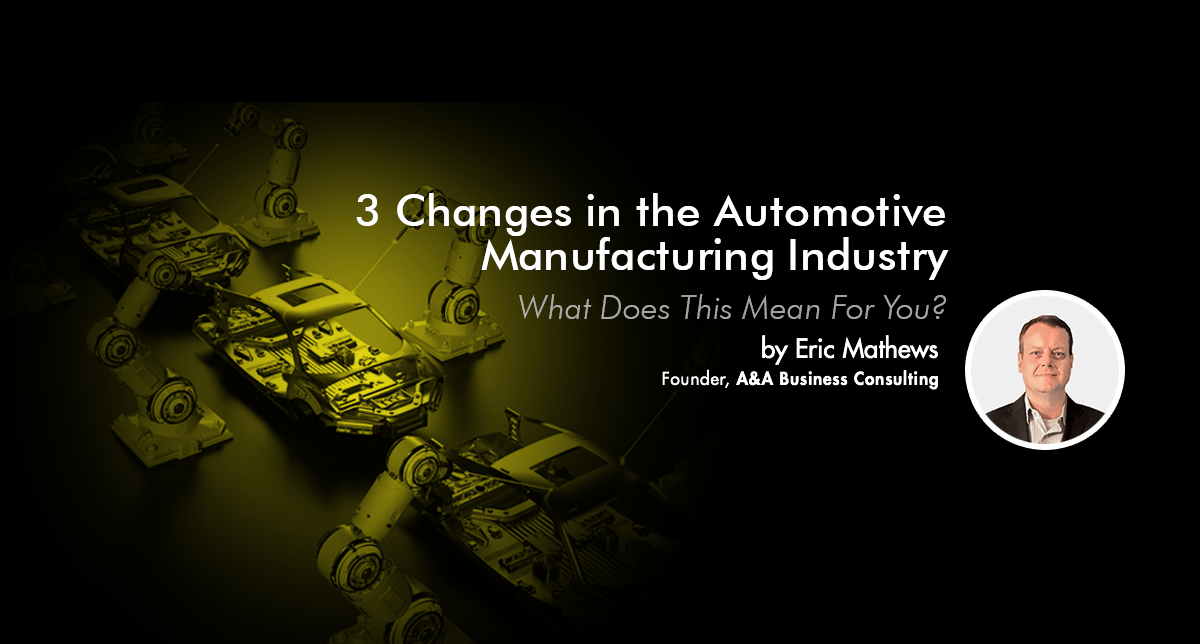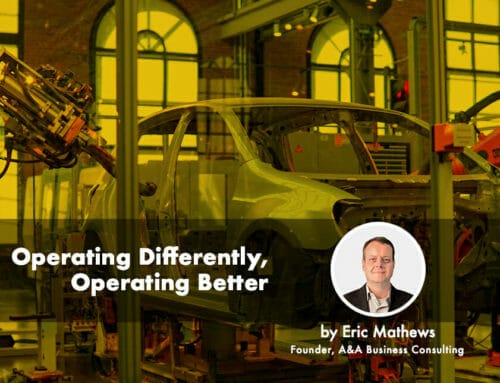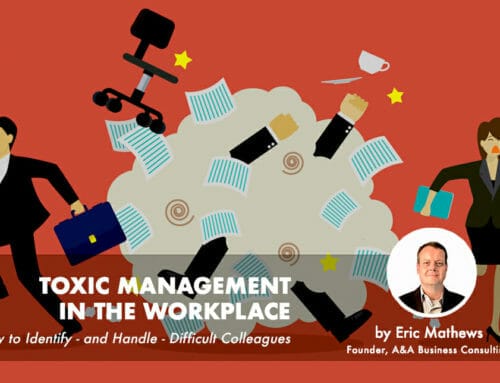If the industry is changing, you need to change with it.
Change.
It happens whether we like it or not. For some, change represents exciting new opportunities. These people are attracted to change and all the possibilities it represents. For others, change can bring feelings of insecurity and doubt. They tend to stick to the tried-and-true methods of operation.
Whichever camp you belong to, I have always believed it’s best to prepare for change, to anticipate the future of an industry and plan in order to achieve the best possible outcome. In my experience, this willingness to acknowledge and embrace change is all the difference between success and failure. Abraham Maslow, noted psychologist, said, “In any given moment we have two options: to step forward into growth or step back into safety.”
Over the last 13 years, working with nearly a dozen different automotive manufacturing clients, I have often been a part of that “stepping forward into growth.” I have observed and helped clients grow into the changes that are taking place throughout the entire industry, and I now want to empower you with a little insight into some of these new emerging trends.
Below are three changes you should be seeing in your workplace. In the next two posts, I’ll elaborate further with some suggestions for meeting these changes head-on. For now, ask yourself: where do I see these happening in my company? How are we using these changes to step forward into growth?
Change #1: The Workforce
In generations past, employees in an auto manufacturing plant were able to enjoy certain assurances. Workers at even the most basic level could put in their time, eventually working up to an $80k-a-year paycheck with benefits. Jobs were secured until retirement (barring a plant closure or grand layoff). Employee retention was high—with those kinds of assurances, who would want to move on somewhere else? Loyalty flowed in both directions, with the worker and the company locked in for a long-term relationship.
Cut to now. With many of those assurances gone, Millennials now joining the workforce have little incentive to remain loyal to one company. And I’m not sure I can blame them. Those employees coming in now get far less pay, fewer or no benefits, and no job security. That past loyalty has been severed—if it ever existed at all for them. Instead of a long-term relationship, both employers and employees approach each other with guarded expectations.
What can this change in workforce mean for a company? Well, first of all, it can lead to a dramatic shortage of trust. Why should employees trust a company that doesn’t seem committed to the long-term care of its workers? And on the other side, why should employers trust a workforce that’s ready to quit as soon as a better offer comes along? And without trust, without loyalty, the odds of building that long-term relationship are doomed.
Research indicates that 90% of Millennials will leave a job after less than three years, and 60% of them are actively looking for new employment right now. The high turnover experienced by many in the auto manufacturing industry hurts both sides of the equation. The plant must constantly invest time and resources hiring and training new staff, costing employers between $15-25,000 for each replacement. And the workers are cutting short the experience and seniority they could be gaining. This is one of the changes companies must acknowledge and plan for if they hope to grow into the coming generations.
Have you experienced a generational shift in your workforce? How are you meeting those changes?
Change #2: The Schedule
Loyalty and employee retention aren’t the only factors impacted by the shifting generational expectations. Attitudes about schedules have changed dramatically.
Where the Baby Boomer would have been willing to work consistent overtime hours on Saturdays, and maybe even on Sundays, Millennials want their weekends off. The change really happens at the fundamental level, reflecting how each generation of the workforce views their quality of life. For a Boomer, the time-and-a-half earned on those Saturdays could go towards the purchase of a boat or some other fun recreational splurge. For a Millennials, having a delineated work/home life balance, and a schedule that accommodates a number of current life-building interests, could lead to a more immediate sense of wellbeing.
And while I’m not here to suggest one set of values is better than the other, it is a change to note because it affects the productivity standards and trends within automotive plants. If a company takes orders and makes commitments based on the previous way of thinking—that workers would be happy to sacrifice weekends to meet demands—they could be left in a tight spot when employees turn down that overtime pay.
Additionally, if employees used to feel incentivized into working overtime weekend hours, production throughout the week would possibly lag to ensure those weekend hours would be available. Now that overtime pay doesn’t seem to incentivize the workforce as it used to, it becomes that much more important that weekdays are efficient.
Without addressing these changes, quotas won’t be met. Numbers will fall short. Schedules will be off. How are you meeting this change in attitude toward schedules and hours worked?
Change #3: The Demands
In an industry that plans efficiency down to the second, being able to keep up with demands is vital to the success of an auto manufacturing plant. And while customers of the plant (OEMs) shouldn’t schedule and plan for 100% efficiency (because things can go wrong), they do sometimes request more parts than what was contracted.
This may not seem like a big deal, and in the past, it didn’t have to be. When OEMs changed their expectations, and efficiency lagged in the week, workers would show up on the weekend to meet the altered demands. But because of the changes I listed above, plants now struggle to keep OEMs happy. The workforce is turning over (translation: loss of efficiency and resources) and unmotivated to put in the extra hours (translation: loss of accessible scheduling). Plants now struggle to provide realistic timelines and consistent results when the demands change. This “Spot Buy” scenario, combined with the other changes in the industry, can create a significant backup in a plant.
How have the demands of your OEMs changed? How have the changes in your company affected the ways in which you can meet these demands?
I’ve given you three major changes I’ve observed in the auto manufacturing industry. But don’t worry—I also have in mind some proven ways to approach some of these changes so that you can “step forward into growth.” I’d love to share them with you, so be sure to read the next two blog posts for more insight and ideas into these issues. And if you’d like to be notified of my next post, you can subscribe here.





